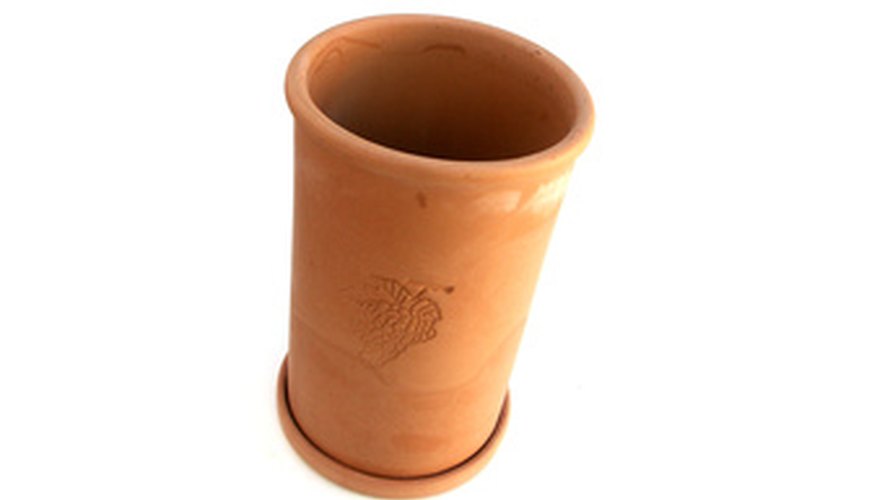Clay sewer pipes or "terra cotta" pipes were used widely for drains starting in the early 1900s. Terra cotta pipes were available in 60 cm, 90 cm or 1.2 m (2, 3 or 4 foot) sections. The clay material is actually very good for sewer drains. The main source of problems with terra cotta pipes occur because of the joints. The joint is made up of a bell-shaped end (female) and a male end. The pipes were pressed together and formed a snug joint. However the joints were vulnerable to root invasion leakage if water pressure was high.
- Clay sewer pipes or "terra cotta" pipes were used widely for drains starting in the early 1900s.
- The clay material is actually very good for sewer drains.
Dig around the end of the clay pipe.
Remove all debris from the outside of the pipe.
Cut the pipe with the cut-off saw so that the edge is straight.
Measure the diameter of the pipe. Normally, 15 cm (6 inch) terra cotta pipe was used for residential purposes.
Loosen the hex screws on the rubber cap so that you can easily slide the cap over the pipe.
- Dig around the end of the clay pipe.
- Loosen the hex screws on the rubber cap so that you can easily slide the cap over the pipe.
Press the cap onto the pipe firmly and hold tight while tightening the screws.
Mix cement and pour cement all around the end of the pipe and cap.
Allow the cement to dry overnight and backfill soil into the hole.
TIP
Use a cut-off saw to make a clean cut at the end of the pipe.
WARNING
Make sure that the drain pipe is not being used and can be capped. Do not hit the clay pipe with a hammer because it will crack easily.
